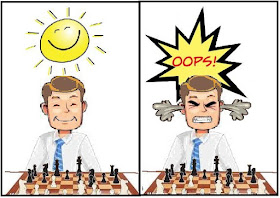An article on the Military History Matters website listed nine deposed English kings, some of whom were gruesomely dethroned. One example was the hot tempered William II (1087-1100) who filled his court with undeserving lackeys and spent too much time hunting. He was killed by a stray arrow in the New Forest and some suspected foul play.
His case was possibly and early example of what was known as "fragging" in the Vietnam War which was the deliberate killing of a military colleague.
There have been many documented instances throughout history of soldiers killing colleagues, however, the practice of fragging seems to have been relatively uncommon in the US military until the Vietnam War.
An early estimate was that something over 1,000 fragging incidents may have taken place in Vietnam, causing 86 deaths and 714 injuries, the majority of whom were officers and non-commissioned officers.
The first known incidents of fragging in South Vietnam took place in 1966, but fragging incidents appear to have increased in 1968. After the Tet Offensive early that year, the Vietnam War became increasingly unpopular in the United States and among American soldiers in Vietnam, many of whom were draftees. Secondly, about that time racial tensions between white and black military personnel increased after the assassination of Martin Luther King Jr. in April, 1968.
With troops reluctant to risk their lives in what was perceived as a lost war being conducted by bumbling politicians, most notably President Lyndon Johnson, fragging was seen by some enlisted men as the most effective way of discouraging their superiors from showing enthusiasm for combat.
By 1971, a Marine Corps Colonel declared, "The morale, discipline and battle worthiness of the US Armed Forces are, with a few salient exceptions, lower and worse than at any time in this century and possibly in the history of the United States."
In another example involving English kings, there was Edward II (1307-1327) who was described as a weak-willed playboy who was ineffective and unpopular. With a preference for male lovers, he was estranged from his wife and was overthrown in a conspiracy led by the queen herself. He was imprisoned and killed by having a red-hot poker thrust up his rectum.
In chess, the most primitive way of winning and the one that appeals to some bloodthirsty types is the King hunt, an assault on the enemy King, preferably from the get-go before castling has taken place.
Experienced player take time to castle early, but even after the King has a permanent residence, if its defenses are
defective it's possible for the opponent to immediately train his guns on the King.
Whichever way it happens, it's fun to watch as the following game demonstrates.
White was played by the Polish Master Antoni Wojciechowaki (June 6, 1905 - January 19, 1938, 32 years old), a well-known player in Poznan in the 1920s and 1930s. Almost nothing is known of the player of the black pieces, Hermann Weiss, except that he was Austrian.
The game was played in the 1936 Munich Olympiad which was the 3rd unofficial Olympia. It was held by German Chess Federation as a counterpart of the 1936 Summer Olympics in Berlin. Given the times, oddly, many Jewish players took part in the event. The finals consisted of 21 teams and was won by Hungary ahead of Poland, Germany, Yugoslavia and Czechoslovakia.
A game that I liked (Fritz 17)
1.e4 e6 2.d4 d5 3.c3 b4 4.ge2 dxe4 5.a3 xc3+ 6.xc3 f5 6...c6 7.b5 ge7 7.f3 7.h5+ g6 8.h3 c6 9.f4 f6 9...xd4 10.b5 xb2 11.xc7+ d8 12.d1+ 10.0-0-0 d5 11.xd5 exd5 12.g3 7...exf3 8.xf3 h4+ 8...xd4 9.g3 f6 10.b5 e4+ 11.e2 a6 12.xg7 f8 13.h6 f7 9.g3 xd4 10.e3 10.b5 e5+ 11.e2 a6 12.c3 f6 13.f4 10...g4 11.g2 f6 12.e2 g6 13.0-0-0 c6 13...0-0 14.b5 a6 15.he1 e5 16.xa7 e4 17.xc8 axc8 14.b5 f7 15.c5 a6 15...e5 16.d6 a2 17.xc7+ f7 18.c3 18.xa8 a1+ 19.d2 xb2 18...d7 19.d3 19.xa8 a5 20.c7 a4 19...a5 20.b1 c4 16.f3 d8 16...axb5 17.xc6+ bxc6 18.xc6+ 17.d2 d5 18.xd5 axb5 18...exd5 19.he1+ e6 20.d4 c6 20...d7 21.f4 g6 22.e5 g8 23.xe6 f7 24.f6 21.xe6 xe6 22.xe6+ xe6 23.e1 19.he1 d7 20.g4 c6 21.gxf5 xf5 21...0-0-0 22.fxe6 xe6 23.xe6+ xe6 24.xe6 xd2 25.xd2 22.xe6 xe6 22...0-0-0 23.xd7+ xd7 24.xf5 b8 25.e7 hd8 23.d7# 1–0


















